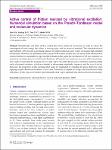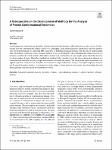Search
Author
- Dan, Guo (1)
- Steven, Hayward (1)
- Xiao, Ma (1)
- Xinfeng, Tan (1)
- next >
Subject
Date issued
Has File(s)
- true (2)
Search Results
Superlubricity and active friction control have been extensively researched in order to reduce the consumption of fossil energy, the failure of moving parts, and the waste of materials. The vibration-induced superlubricity (VIS) presents a promising solution for friction reduction since it does not require high-standard environment. However, the mechanism underlying the VIS remains unclear since the atomic-scale information in a buried interface is unavailable to experimental methods. In this paper, the mechanism of VIS was examined via numerical calculation based on the Prandtl—Tomlinson (PT) model and molecular dynamics (MD) simulations. The results revealed that the pushing effect of stick—slip is one of the direct sources of friction reduction ability under vibrational excitatio... |
Analysing protein conformational ensembles whether from molecular dynamics (MD) simulation or other sources for functionally relevant conformational changes can be very challenging. In the nineteen nineties dimensional reduction methods were developed primarily for analysing MD trajectories to determine dominant motions with the aim of understanding their relationship to function. Coarse-graining methods were also developed so the conformational change between two structures could be described in terms of the relative motion of a small number of quasi-rigid regions rather than in terms of a large number of atoms. |


